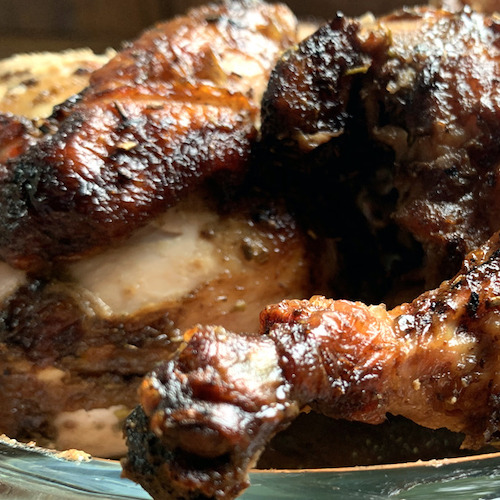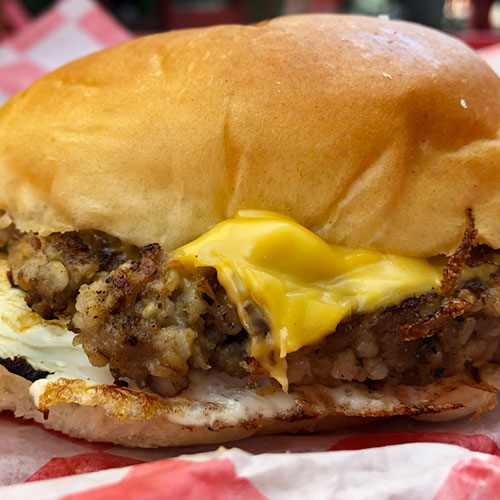Sometimes, terrible urban planning decisions yield unexpected benefits. Take, for instance, the construction of I-75 in Cincinnati, in the late 1950s. While the highway bypassed once prosperous and popular West Side neighborhoods such as Cheviot, Westwood, and Price Hill, it also preserved parts as virtual time capsules, protecting the sorts of old-school pizzerias, steakhouses, diners, and other neighborhood joints that have all but disappeared in other parts of Cincinnati.
Truth be told, I didn’t know much about the West Side while growing up in Cincinnati during the 1980s and 90s. As a resident of its rival East Side, I’d been told it wasn’t even worth the visit. That all changed when I moved back here last May, after twenty years spent living in New Orleans and New York. While I’m still an East Sider, I’ve found myself exploring the West Side with the same excitement I felt exploring Brooklyn after I moved there in 2003. I make regular stops at Wassler Meats, a nineteenth-century German butcher shop, to pick up my bratwurst and mettwurst (known here simply as brats and metts) before heading to the 1960s-era Regina Bakery in Cheviot for their legendary butter-bit dinner rolls. I’ve also become a die-hard fan of the area’s dive bars, pizzerias, steakhouses, and chili parlors, all of which maintain a tight-knit neighborhood vibe that’s rare but welcome these days. So while I remain a dedicated East Sider, I visit the West Side whenever I can. There are too many reasons—both old and new—to go there. Here are just a few.
I make regular stops at Wassler Meats, a 19th-century German butcher shop, to pick up my bratwurst and mettwurst (known here simply as brats and metts) before heading to the 1960s-era Regina Bakery, in Cheviot for their legendary butter-bit dinner rolls.
If Maury’s Tiny Cove were located in a larger, more touristy city, it would probably be known nationally the same way as, say, Keens Steakhouse in New York or Musso & Frank in Los Angeles. With its wood-paneled walls, brass chandeliers, and red-leather booths, it maintains an old-school vibe worthy of Martin Scorcese—or David Lynch. The place has been around since 1949, when Maurice “Maury” Bibent opened it as a no-frills steakhouse and lounge, though it’s expanded significantly over the years, now occupying the entirety of an old house where one of Cheviot’s first mayors lived. There are several dining rooms, as well as The Key Club, a lively upstairs piano bar where musicians like Ricky Nye belt out everything from “The Davenport Stomp” to “Let’s Have a Ball.” While I’m partial to Maury’s lasagna, the menu also includes a lovely prime rib, a rack of lamb, chicken piccata, surf & turf, French onion soup and a local specialty known as hanky panks—small rye toasts topped with sausage, cheese and parsley. Don’t knock ‘em till you’ve tried ‘em.
Even though it opened in 2017, the first—and, as of now, only—taproom on the West Side is already as much of a community fixture as any age-old pub. The brewery’s president, Joe Mumper, and his three business partners have turned what was once a 1920s auto shop in Westwood into an affable, family-friendly spot, with chili cookoffs, live music, and free root beer floats for the kids. And then there are the beers—most of them unlike what you’ll find at other Cincinnati taprooms, including ESBs, Commons, and Scottish Ales. Sit at the bar and sip one one while listening in on conversations about Xavier University basketball or the prospects for Elder High School’s next season. You’ll probably hear some Lynyrd Skynyrd or Led Zeppelin. The bartender will treat you well, and by the time you leave, you might feel like a true West Sider, no matter what part of the city (or the country) you’re from.
The Incline District, named for the uphill trolley that carried locals from Cincinnati’s Price Hill neighborhood to downtown from the late 1800s to the 1940s, is one of the West Side’s prettiest areas. It’s also home to the Incline Public House, which offers a gorgeous panoramic view of downtown Cincinnati, the Ohio River, and northern Kentucky from its 1,400-square-foot deck and through its huge plate-glass windows. The place features gussied-up pub fare (fish & chips, chicken pot pie, poutine, and burgers) as well as gourmet pizzas and sandwiches. There are plenty of local craft beers to choose from, as well as cocktails, including the Remus Ohio Sour, which is made with locally distilled George Remus bourbon, lemon juice, and simple syrup, and topped with a splash of red wine. It’s the ideal elixir to sip on as you watch the sun go down on Cincinnati.
We Cincinnatians call our drive-thru beer and liquor stores pony kegs, because of the small kegs we used to pick up there in high schoo… er, college. Each pony has its own unique personality, but only one is indisputably worth a trip from anywhere in the city. Along with plenty of beers, both macro and micro, Trotta’s offers what many consider Cincinnati’s best slice of pizza. Garlicky and a little bit sweet (we like our pizza sauce sweet down here), the pizza is the closest thing I’ve found in Cincinnati to New York’s cheap slice. You can order a pie topped with our famous oat-and-pork sausage, goetta, or get yourself a more portable hoagie (yeah, we call subs hoagies here) for the drive home.
Ron’s Roost
3853 Race Street
513-574-0222
Serving the West Side since 1960, Ron’s Roost is the kind of place your parents took you to when you were a kid—the kind of place that you visit when you come back to Cincinnati. Not just because you miss the juicy, perfectly fried chicken and thick-cut potato chips, but because you miss what it feels like to be home. It’s hard to miss Ron’s as you drive down Race Road. The brick and stucco building has a bright red awning out front, but it’s the gigantic chicken mounted to the flatbed of an El Camino that catches most people’s attention (Ron Larkin, who owns the place with his wife, Donna, drives the car to and from work almost every day). Inside, you’ll find a cavernous dining room complete with a full bar and a cozy fireplace. Aside from fried chicken, Ron’s offers country-style turkey and dressing, chicken livers, a killer mock turtle soup, strip steaks and, in a nod to Cincinnati’s German roots, sauerbraten.
There is no one Cincinnati chili, though many Cincinnati neighborhoods have parlors that they’ll swear serve the best versions. Perhaps no parlor has more devotees than Price Hill Chili. Their chili is more cinnamon-forward, their spaghetti a bit more al dente. No matter what your chili preferences, you can’t deny that it’s damn good. And if you’re not a Cincinnati chili fan (yes, we will hold that against you), there are plenty of other menu options available here, from scrambled eggs to ribeye steak. Reflecting the fact that Price Hill, like most other chili parlors in Cincinnati, was opened by Greek immigrants, you’ll see a Greek salad, “Greek poutine” (with feta, brown gravy and “Greek spices”), and a gyro. Navigate the parlor’s labyrinth of dining rooms and you’ll eventually end up in the Golden Fleece Lounge, where you can pair your three-way with a cold local beer or—if your schedule’s clear for the day—a shot of whiskey.
Sebastian’s
5209 Glenway Avenue
513-471-2100
“Here, try this,” Alex Vassilou called out to me after I paid my bill and headed toward the door of his tiny Greek diner, where he’s been slicing gyro meat for loyal customers since 1975. It was a buttery, powdered-sugar-coated Greek wedding cookie, and I savored it as I walked out the door of this iconic restaurant, known for its takeout gyros, sausages, and baklava, and onto busy Glenway Avenue. Vassilou, a proud Korean War veteran, opened the diner with his wife, Helen. He had help from another West Side legend—the restaurant’s namesake, pizza maven Buddy LaRosa, born Donald Sebastiano LaRosa. Today, it feels like a mirage. It’s the kind of Greek diner you don’t expect to see outside New York, or maybe Greece. We can only dream of such a place over on the East Side.




